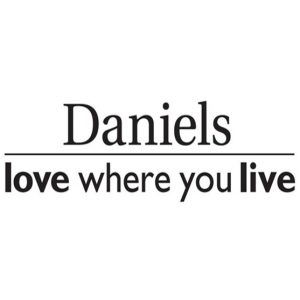Here’s something I was reminded of yesterday, and then I realized that I never wrote about this back when it first came up!
Flash back to about seven or eight years ago, and just when you thought we had seen every way in which a condo in Toronto would be sold, along came “Boost.”
The marketing gimmick was a bit cheezy – “boosting” your down payment from 5% to 15%, but the concept itself was somewhat novel, and it was backed by all three levels of government – Toronto, Ontario, and Canada.
How do you think it turned out in the end?

I’m not sure who’s idea this was.
Maybe it was Daniels, in an effort to sell more condos.
Maybe it was the government, in an effort to create housing more affordable.
Or perhaps Daniels needed another way to sell condos, and the government needed to seem like they were doing something about affordable housing. Perhaps it was a marriage made in heaven.
In any event, back in 2009, Daniels Corporation introduced their novel “boost” program to the condo market.
Essentially, they were willing to allow first-time buyers, those who didn’t own, and who were in a lower-income bracket, to borrow off future appreciation of the condo in order to be able to afford it in the first place.
Novel concept?
Or irresponsible?
The funds – those non-existent, future appreciation dollars, were going to be fully recognized by CMHC!
So the project had the backing of the most important government body in real estate.
Now keep in mind, that this was going to be one of the first condominiums in the “newly-revitalized” Regent Park area.
The tenants of Regent Park, ie. those living with government assistance, were supposed to be the main beneficiary of the Boost program, in an effort to keep some of the “residents” of the area in the neighbourhood.
The Boost program would also be available, however, to anybody who met the criteria.
One of Daniels Corporation’s old brochures laid out the process in three sections: “The Benefits,” “How To Qualify,” and “Repayment.”
Here’s how they broke it down:
The Benefits
• The program provides qualified purchasers with a 10% down payment assistance in the form of a second mortgage
• The funds are recognized by CMHC
• This is an interest FREE and payment FREE second mortgage
How to Qualify
• You and/or your spouse cannot own a home in Canada, and you must currently be renting
• Your home at One Park Place Condominiums must be your sole and principal residence
• Your annual household income does not exceed $82,600
• You must be a permanent resident of Canada
• You must be 18 years of age or older
Repayment
• Repayment occurs when you sell your home or when it is no longer your principal residence
• At that time you will repay the original 10% second mortgage plus 10% of the capital appreciation. As an example – on a purchase price of $250,000 where a 10% second mortgage was obtained and the resale price was $300,000, the repayment would be the original 10% ($25,000) plus 10% of the $50,000 increase value, which would equal $5,000 for a total repayment of $30,000
• If you sell your home within the 20 year period but experience a capital loss, repayment of the loan is waived provided it is sold at fair value and the sale is an arm’s length transaction
• If you own and occupy the home for 20 years the second mortgage is forgiven
• If you would like to repay the loan within 20 years without selling the home, the 10% second mortgage plus 10% of the capital appreciation must be paid
If you’re as cynical as me, you read all the sections with “20 year period” and wondered what the hell the folks who dreamed this up were thinking.
Owning a freehold home for twenty years? Sure, that happens.
But I have met maybe……five? Maybe five people, in twelve years, that have owned a condo for longer than twenty years?
So what was the purpose of the second-last point: “If you own and occupy the home for 20 years, the second mortgage is forgiven.”
The odds of a person buying a condo in 2010 or 2011, and occupying it for 20 years, are about one in a million, no exaggeration here.
So why include that point?
Was it to set some sort of unreachable goal for the would-be buyer? Or to show folks another version of winning the lottery?
So ignoring that oddity, let’s get down to the meat here.
Buyers who “took advantage” of the Boost program were able to borrow their 10% down payment, by promising to pay back that entire 10% down payment when they sold, PLUS, pay back 10% of the appreciation.
So the fee for borrowing that 10% was to be somewhat indeterminate. It could have been nothing, or it could be a whack of cash.
Daniels even provided an illustration of the “boost” itself, but not how the money was to be paid back. Check this out:

–
Okay, okay.
So what did happen with the Boost program, you’re wondering?
It didn’t take long for other cynics to catch on.
Sue-Ann Levy, a columnist for the Toronto Sun, wrote three really great pieces on the project.
Ms. Levy blew the lid off this thing back in 2012!
The first article can be read HERE.
The second article can be read HERE.
And the final nail in the coffin can be read HERE.
It’s in that last article that Ms. Levy revealed the most important number associate with the “Boost” program: twelve.
Only twelve tenants living in Regent Park had the ability to access and utilize the “Boost” program that was a driving force in the Regent Park redevelopment.
Oh – and Ms. Levy also uncovered that the niece of Daniels’ Corporation’s President also bought into the project and accessed the “Boost” program, even though she was from a prominent and wealthy family, but that’s just a trivia nugget.
It was really great investigating, and Toronto City Councilor, Pam McConnell, looked like a fool for having bought into the project (after serving on the board of directors for the joint venture between the TCHC & Daniels Corp), and refusing to answer questions about it when asked.
In any event, those are all sidebars and distractions. Or, maybe they’re the real story.
But I can still see those giant purple “BOOST” banners in my mind’s eye. I used to drive home along Dundas every night, and whether it was the font, the colour, the choice of words – whatever it was about that advertising, I just felt like it was a scam.
It was too good to be true, of course. And in hindsight, the idea itself looks silly.
But so does shag carpet, and so too one day will stainless-steel appliances.
Maybe how condos are bought and sold can be a “fad” too…
































Kyle
at 9:07 am
Options for Homes still offers the boost program on all of their projects, including past projects they’ve built in The Distillery and The Junction: http://www.optionsforhomes.ca/boost/
Not sure about the program and whether overall it’s a good deal or bad for the buyers, but i do know that they have a knack for picking up and coming locations.
Livy
at 5:56 pm
You’re Right About Options For Homes Having A Knack For Picking Out The Up And Coming Locations (The Distillery District, The Junction, Etc.). Recently it looks like Options For Homes Has Taken Over A New Development In Milton (Not Built By Deltera And Most Units Were Already Sold before Options took over) And It’s Located Right Next To The Milton GO Station. Overall, I think Options For Homes has been good for both purchasers and community since 90%+ of the buildings are owners, not renters. On Their Blog Last Week, It Looks Like Options For Homes Returned A Rebate Cheque Of $1,278 Average To Each Purchaser for The Cranbrook Village, Which was because of a Construction Surplus.
Apparently, Metrolinx Will Be Creating A New Kiss & Ride Area To Access The Danforth Go Area On The North Side Where The Lumber Yard Is On Dawes Road, South Of Danforth Avenue. My friend who bought into their Village By Main Station development told me that Options Was Approached By Metrolinx To Create A Public Entrance To Access From Their Condo Development On Trent Avenue To The Danforth GO Platform, But Options Declined The Offer Because It Would Mean A Significant Design Change To The Building And The Building Would No Longer Be Private. There Are Currently Developers Scouting The Land South Of Danforth Avenue Near Dawes Road So In The Future There may be At Least One (Or More) Future Condo Developments That Will Be Built With Access To Danforth GO Station.
Ken
at 7:25 pm
The 20 year rule, 10% extra down seems to be pretty common with may government programs.
Here’s a link to Simcoe County’s down payment assistance program. I believe similar programs run in most parts of Ontario
http://www.simcoe.ca/SocialHousing/Documents/Homeownership%20application%20package%202016-17.pdf
Don Juan's Dong
at 2:37 pm
Incredibly new development, government doesnt understand an economic arrangement!!!